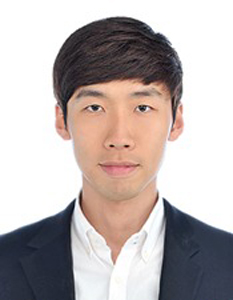Program Information
Evaluating Commercial Orthopedic Metal Artifact Reduction Tool (O-MAR) for CT Simulation in Radiotherapy for Head-And-Neck Cases
H Kwon1,2,3*, J Kim1,2,3,4, K Kim5, Y Chun4, J Park2,3,4, S Ye1,4,7, (1) Interdisciplinary program in Radiation Applied Life Science, Seoul National University College of Medicine, Seoul, Korea, (2) Biomedical Research Institute, Seoul National University Hospital, Seoul, Korea, (3) Institute of Radiation Medicine, Seoul National University Medical Research Center, Seoul, Korea, (4) Department of Radiation Oncology, Seoul National University Hospital, Seoul, Korea, (5) Department of Radiation Oncology, Seoul National University College of Medicine, Seoul, Korea, (6) Philips Healthcare Korea, Seoul, Korea, (7) Program in Biomedical Radiation Sciences, Department of Transdisciplinary Studies, Graduate School of Convergence Science and Technology, Seoul National University, Seoul, Korea
SU-E-J-98 Sunday 3:00PM - 6:00PM Room: Exhibit HallPurpose: Many head-and-neck (H&N) patients have dental implants which can induce severe metal artifacts in CT images. This study assessed the performance and the effectiveness of the commercial orthopedic metal artifact reduction function (O-MAR) for radiotherapy of H&N patients.
Methods: 20 H&N images scanned by Philips Brilliance Big Bore CT were used for the assessment. After O-MAR correction, the CT Hounsfield number and noise were measured and compared between the original and O-MAR corrected images. Structures were contoured by a radiation oncologist on each of the two image sets. These contoured structure volumes on the original CT image were compared with those on O-MAR corrected CT image by radiation therapy planning system. After volumetric-modulated arc therapy (VMAT) planning was performed on the original CT image, this plan was translated and calculated on O-MAR corrected images. Each DVH was compared and the gamma passing rate was calculated for comparing dose distributions.
Results: CT Hounsfield numbers became closer to the reference values after O-MAR correction. The standard deviations of the selected ROIs were reduced from 323.9 HU to 195.6 HU in air and from 43.5 HU to 24.7 HU in tissue. The volumes of contoured structure showed minute change. The difference between two DVH was less than 0.5%. The gamma pass rates of dose distributions calculated on the original and O-MAR corrected images were higher than 99.9% in the case of closed-mouth-images but were about 80% in the case of opened-mouth-images when using 1mm and 1% distance-to-agreement criterion.
Conclusion: The O-MAR algorithm is suitable for the entire radiation treatment planning process by increasing the accuracy of CT Hounsfield numbers and reducing noises. Although there was no significant difference in dose distribution for most cases, the O-MAR correction was shown to have an impact on opened-mouth-images.
Contact Email:


